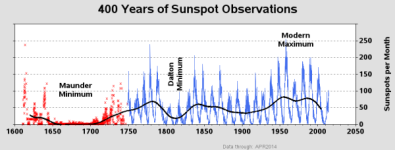Jimmy Higgins
Contributor
- Joined
- Jan 31, 2001
- Messages
- 45,987
- Basic Beliefs
- Calvinistic Atheist
A paper is out that ponders the influence the changes in the New World had regarding the Little Ice Age.
As a reminder, this is a paper, not professional consensus.article said:The team says the disruption that followed European settlement led to a huge swathe of abandoned agricultural land being reclaimed by fast-growing trees and other vegetation.
This pulled down enough carbon dioxide (CO₂) from the atmosphere to eventually chill the planet.


